This page will explain the various gearing on our different heads, and how we determine a baseline pulses per microliter value.
The 27:1 EMO and VOL
The EMO and VOL heads each have:
- A 1.8° stepping motor;
- Running in 1/16th microstep mode;
- A 27:1 planetary gear;
- A 1:1 drive screw coupling;
- A drive screw with a pitch of 18 threads per inch, or 1.411 thread per mm;
- And a reservoir with a 17 mm diameter, or 227 mm2 cross section.
The table below explains how a certain number of pulses (or microsteps) on the motor will generate a certain volume displacement in the reservoir - the pulses/µL (or pulses/mm3) number that we need to control the material advance or displacement. Note that factors like viscosity, compressibility, and nozzle characteristics will introduce some delay from the time of displacement to the time of actual extrusion.
Flow Calculations for the 27:1 EMO and VOL Heads
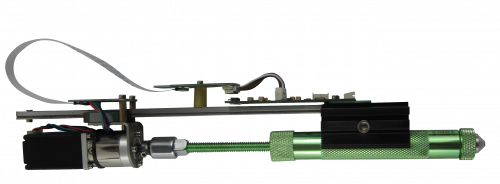
|
| Component
|
Motor
|
Gearing
|
Coupling
|
Drive Screw
|
Reservoir
|
| Image
|

|

|

|
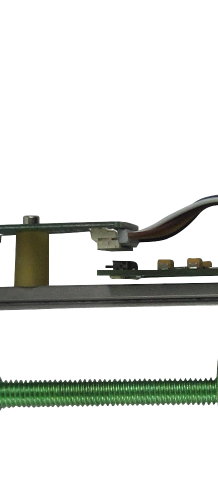
|

|
| Details
|
NEMA 11, 1.8° stepping motor,
so 200 full steps = 1 revolution.
1 pulse is a 1/16th microstep,
so 3200 pulses = 1 motor rev.
|
27:1 planetary gear,
so 27 motor revs
= 1 output rev.
|
1:1 direct coupling,
so no change
is introduced.
|
The drive screw has a pitch
of 18 threads per inch, or
1.411 mm linear travel
per revolution.
|
The reservoir has a diameter of 17 mm,
so the cross sectional area is 227 mm2.
Therefore, each revolution of the drive screw
displaces 1.411 x 227 or 317.8 mm3 (or 317.8 µL) of volume.
|
1 Rev
Calc.
|
86,400 pulses =
27 motor revs...
|
= 1 output rev...
|
= 1 screw rev...
|
= 1.411 mm linear advance...
|
= 317.8 µL displacement.
|
| And so:
|
86,400 pulses = 317.8 µL, or 271.9 pulses/µL
Experimentation in July 2020 produced average results of 271 pulses/µL
|
The 100:1 EMO-XT, KR2, and TAM
The EMO-XT, KR2, and TAM heads each have:
- A 1.8° stepping motor;
- Running in 1/16th microstep mode;
- A 1001 planetary gear;
- A 1:1 drive screw coupling;
- A drive screw with a pitch of 1 thread per mm;
- And a reservoir with a 17.6 mm diameter, or 240 mm2 cross section.
The table below explains how a certain number of pulses (or microsteps) on the motor will generate a certain volume displacement in the reservoir - the pulses/µL (or pulses/mm3) number that we need to control the material advance or displacement. Note that factors like viscosity, compressibility, and nozzle characteristics will introduce some delay from the time of displacement to the time of actual extrusion.
Flow Calculations for the 100:1 EMO-XT, KR2, and TAM Heads
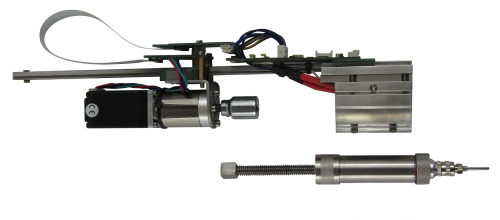
|
| Component
|
Motor
|
Gearing
|
Coupling
|
Drive Screw
|
Reservoir
|
| Image
|
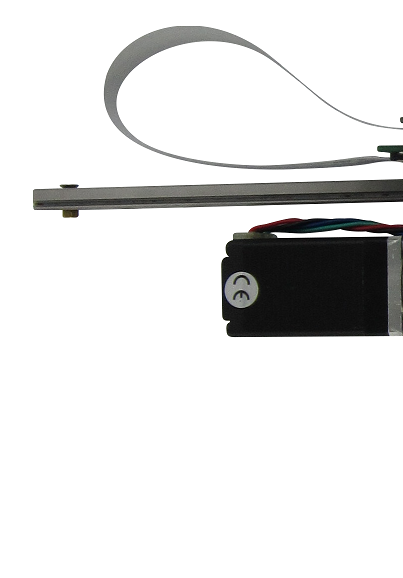
|

|

|

|
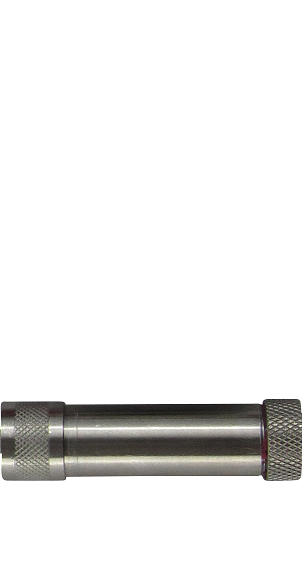
|
| Details
|
NEMA 11, 1.8° stepping motor,
so 200 full steps = 1 revolution.
1 pulse is a 1/16th microstep,
so 3200 pulses = 1 motor rev.
|
100:1 planetary gear,
so 100 motor revs
= 1 output rev.
|
1:1 direct coupling,
so no change
is introduced.
|
The drive screw has a pitch
of 1 thread per mm,
or 1 mm linear travel
per revolution.
|
The reservoir has a diameter of 17.6 mm,
so the cross sectional area is 243 mm2.
Therefore, each revolution of the drive screw
displaces 1 x 243 mm3 (or 243 µL) of volume.
|
1 Rev
Calc.
|
320,000 pulses =
100 motor revs...
|
= 1 output rev...
|
= 1 screw rev...
|
= 1 mm linear advance...
|
= 243 µL displacement.
|
| And so:
|
320,000 pulses = 243 µL, or a theorectical 1317 pulses/µL
Experimentation in July 2020 produced average results of 1297 pulses/µL
|
The MK1-250
The MK1-250 heads have:
- A 1.8° stepping motor;
- Running in 1/16th microstep mode;
- And a hobbed (toothed) shaft with an effective circumference (average hob depth) of 4 mm.
The table below explains how a certain number of pulses (or microsteps) on the motor will generate a certain linear advancement of filament.
Flow Calculations for the MK1-250 Head
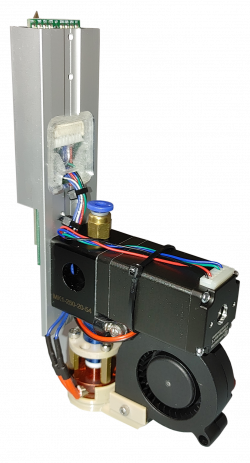
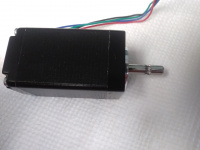
close-up of motor
|
| Component
|
Motor
|
Shaft
|
| Image
|
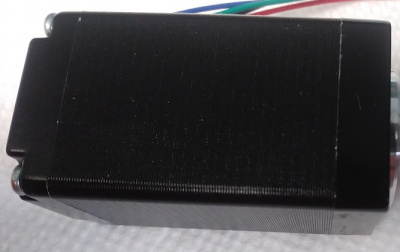
|
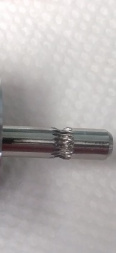
|
| Details
|
NEMA 11, 1.8° stepping motor,
so 200 full steps = 1 revolution.
1 pulse is a 1/16th microstep,
so 3200 pulses = 1 motor rev.
|
The hobs on the motor shaft have an effective diameter 5.25 mm,
so using 2πr (or πØ) gives us an effective circumference of 16.5.
That means one motor rev gives us 16.5 mm of linear filament advance.
|
| Math:
|
Since 1.75 mm filament has a cross section (πr2) of 2.4 mm, that means that for every linear mm of filament advanced, 2.4 mm3 (or 2.4 μL) will be advanced.
Therefore, 3200 pulses equals one revolution, which equals 16.5 mm of linear filament advancement, which equals 39.7 μL advanced.
|
| And so:
|
3200 pulses = 39.7 μL, or a theoretical 80.6 pulses/μL.
Experimentation in July 2020 produced average results of 79 pulses/μL for ABS at 240 °C and 1500 mm/min.
|















